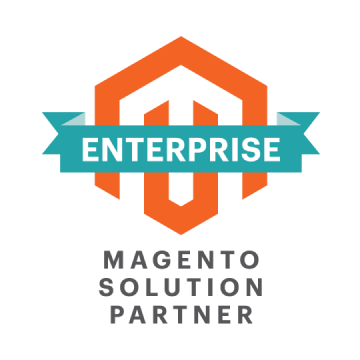Life Sciences IT Solutions
R&D, clinical, and manufacturing teams don’t need another tool; they need connected systems that cut time to insight and keep data audit-ready. We design and integrate life sciences IT across LIMS/ELN, QMS, MES, and clinical data platforms – linking instruments and workflows into one reliable data path – so teams get faster study setup, cleaner handoffs, and fewer manual steps in sample management, batch release, CAPA, and submissions prep.

Our Offerings
LIMS & ELN Modernization
We implement or upgrade LIMS/ELN so assays, stability studies, and sample lifecycles are modeled correctly from day one. That includes roles and audit trails (Part 11–ready), barcode/plate-reader integrations, and validated workflows for sample receipt, chain of custody, and results approval. We also migrate legacy data and create templates so new methods go live without rebuilding from scratch.
Instrument Connectivity & Lab Automation
We connect instruments and robots to your data layer using vendor SDKs, SiLA 2, OPC UA, or REST, then automate acquisition and metadata capture. Scheduling, queueing, and error handling are built in, cutting manual entries and data drops. The result is clean, structured outputs ready for ELN, LIMS, and analytics.
Quality Management (QMS/eQMS)
We roll out CAPA, deviations, complaints, change control, and training records with clear data flows to manufacturing and labs. Forms, workflows, and reports match your SOPs, with traceability from event to effectiveness check. Integration with ERP/MES closes the loop from quality event to batch disposition.
Manufacturing IT (MES & eBR)
We design MES and electronic batch records for weigh-and-dispense, in-process controls, genealogy, and batch release. Shop-floor integrations (scales, printers, PLCs) reduce transcription steps and batch review time. For med-device, we include DHR/Device History Records and link nonconformance to CAPA.
Clinical Data Platforms (EDC, CTMS, eTMF)
We configure EDC and CTMS for rapid study startup, author edit checks and derivations, and set up SDTM/ADaM mapping with traceability. Dashboards cover enrollment, data quality, and query aging; eTMF is structured for inspection readiness. Data exports feed stats programming and submission packages without rework.
Pharmacovigilance & Safety
We unify case intake (email, portal, call center), automate deduplication and triage, and integrate with safety databases (e.g., Argus). Workflows cover narrative generation, medical review, and E2B(R3) submissions, with signal detection dashboards for trends and spikes. SOP-aligned controls make audits smoother.
How We Bring Value To Your Business
We focus on outcomes that cut cycle time, reduce rework, and keep regulated operations inspection-ready.
1
Faster study startup & batch release
Standardized templates, prebuilt edit checks, and eBR patterns move new protocols and products from draft to live with fewer revisions and shorter review-by-exception.
2
Fewer manual steps, fewer errors
Instrument adapters, barcoding, and bidirectional interfaces remove retyping and spreadsheet hops; data lands once with full metadata, then flows to LIMS/ELN, MES, CTMS, and BI.
3
Audit-ready records & traceability
Time-stamped audit trails, controlled vocabularies, and role-based actions create clean histories for Part 11 and GxP. You get consistent CAPA links across labs, manufacturing, and suppliers.
4
Validation that keeps pace
Risk-based validation with reusable test packs, configuration catalogs, and change logs reduces effort on upgrades and vendor releases while preserving documented control.
5
Closed loop from Quality to Ops
QMS events (deviations, complaints, change control) update bills, recipes, and training; MES and ERP receive the change so disposition and effectiveness checks are not orphaned.
6
Data ready for analytics & AI
A governed model for samples, batches, studies, and equipment makes KPIs, statistical process control, and forecasting reliable – and gives approved AI use cases a consistent source.
Challenges We Commonly Solve
The same friction points appear across labs, manufacturing, and clinical operations; here are the ones we tackle most often.
Cut cycle time where it hurts most.
Why Choose WiserBrand
We act as builders, not vendors – shipping working increments, documenting validation, and handing over assets your team can run in life sciences programs.
1
Proven GxP execution built into delivery
We start from your SOPs and process map, then deliver risk-based validation alongside configuration (IQ/OQ/PQ evidence, Part 11 e-signatures, audit trails, change logs). Each release is small, testable, and ready for inspection.
2
Vendor-agnostic stack expertise
We connect LIMS/ELN, QMS, MES, EDC/CTMS/eTMF, ERP, and data platforms using open interfaces (APIs, SiLA 2, OPC UA). Experience spans systems like LabVantage/LabWare/Benchling, MasterControl /TrackWise, and common MES/EDC tools—so choices stay driven by fit, not lock-in.
3
Reusable accelerators and clean handoff
Prebuilt instrument adapters, eBR patterns, SDTM/ADaM mapping templates, configuration catalogs, and test packs cut delivery time. We document decisions, train your admins, and leave playbooks so your team keeps ownership.
Cooperation Models
Pick the engagement pattern that fits your risk, timelines, and team capacity.
We define a clear slice of work—e.g., a LIMS module, an eBR for one product, or an EDC startup package—then deliver it as a validated release with configuration catalogs, test evidence (IQ/OQ/PQ), and admin training. Integrations are included where needed, and handoff is clean so your team can run day-to-day.
A cross-functional squad (solution architect, CSV/QA, integration engineer, data engineer, product lead) works inside your backlog and ceremonies. We pair with SMEs, follow your change control, and build capability on your side while shipping increments across labs, manufacturing, and clinical.
Post go-live, we handle release management, small enhancements, connector upkeep, and validation updates tied to vendor versions. You get ticketed support, performance monitoring, and a steady cadence of improvements that keep systems current without disrupting operations.
Our Experts Team Up With Major Players
Partnering with forward-thinking companies, we deliver digital solutions that empower businesses to reach new heights.
Our Approach
We work in small, validated increments so value lands early and risk stays low.
Map Processes & Risks
We sit with SMEs to chart current assays, batch flows, and study steps, review SOPs and constraints (GxP, 21 CFR Part 11), and capture gaps. Outputs: process map, user stories, risk assessment (GAMP 5), draft data model, and baseline metrics like review time and query aging.
Plan Architecture & Releases
We decide what to keep, replace, or integrate across LIMS/ELN, QMS, MES, EDC/CTMS, ERP, and analytics. Deliverables include interface specs, master data definitions, roles/permissions model, a validation plan, and a release roadmap with clear, testable slices.
Build & Integrate
We configure target systems, develop instrument adapters and shop-floor connectors, and set up data pipelines to your warehouse/lakehouse. Reusable templates (e.g., eBR patterns, edit checks, SDTM/ADaM mappings) reduce rework. Every change lands first in a controlled test environment with automated checks.
Validate & Train
We execute risk-based CSV (IQ/OQ/PQ), document audit trails and e-sign controls, run UAT with your teams, and update SOPs as needed. Admins and end users get practical training focused on day-to-day scenarios.
Go-Live & Improve
We cut over with hypercare, track performance and data quality, and work a steady backlog of enhancements, vendor updates, and small releases. The aim is stable operations in labs, manufacturing, and clinical programs—and a data foundation ready for analytics and approved AI use cases.
Case Studies
Our case studies highlight the outcomes we’ve delivered and the approaches that made them possible.
Life Sciences IT Solutions FAQ
Small, testable releases with risk-based validation (GAMP 5), reusable test packs, and UAT with your SMEs. Each drop ships with IQ/OQ/PQ evidence and a clear rollback plan.
Yes. We use vendor SDKs, SiLA 2, OPC UA, or REST to capture outputs and metadata, map them to sample IDs and method versions, pilot on one assay, then expand.
Unique user IDs, e-signatures at approval points, immutable audit trails, role-based access, and retrievable records – configured, tested, and fully documented.
We build APIs and message flows with shared master data (products, sites, lots) so results, quality events, and dispositions move bidirectionally across LIMS, QMS, MES/ERP, and BI.
After the data foundation. We set up a governed warehouse with lineage and standard models (samples, batches, studies) so approved AI use cases – like anomaly detection or query triage – add value without disrupting operations.























